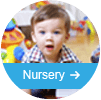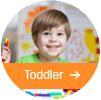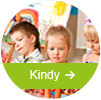Why Art is Important in The Early Learning Program for Toddlers
Almost all toddlers love to make a mess. If you give them the opportunity to do so with pencils, paints and crayons, then you’ll be seen as something of a hero!
More seriously, the creative arts are highly important in any early learning program for toddlers.
Why an early learning program for toddlers emphasises art
Of course, very few children are capable of recognisable art work in their toddler years. Whether paint, crayons, pencils or construction bricks are involved, their efforts are often based around simply having fun.
Yet this isn’t just about making a mess of the type a typical parental home might struggle to accommodate. True, toddlers equipped with some of the above implements will cause a degree of mayhem and a significant cleaning-up challenge but while they’re doing so, they’re also taking the first steps in developing their creative talents and imaginations.
This is why ‘art’ and related creative activities are considered so important as part of an early learning program for toddlers.
Developmental ages
12-15 months
Most toddlers will have developed what’s called the ‘pincer grip’. That means the ability to grasp an object between their forefinger and thumb. Once they have done so, they’ll quickly grasp that some objects, such as crayons, pencils and paint brushes, will make a very nice mark on surfaces.
Initially their painting and drawing will be largely driven by a child’s need to experiment with manipulating the environment around them. Scribbling with a crayon in that sense will be little different to them experimenting with moving food around on their plate and so on.
15-24 months
Toddlers should have moved into learning that art is a way of representing things around them or expressing their own imagination. It is very difficult for parents and care providers to see at what stage this transition happens because there may not be a great deal of recognisable difference in their work. Expect lots of shapeless blobs and zigzag lines!
However, a change will have taken place. Children won’t be making marks just to see if they can change the surface of paper but will see something in what they’re producing. It might be a shapeless line to an adult but a toddler might be trying to draw a tree and will see it as such.
Often, the first clue is when toddlers point to something they’ve drawn and describe it.
20-30 months
Somewhere in this age range, children start showing an awareness of the surface they’re working on and proportionality.
Much of their art will still be tricky or impossible to recognise but it will increasingly start to form definite shapes (recognisable if you’re fortunate!) and will start to fill the available surface. They should find it increasingly easy to describe what they’ve painted and explain it to others.
As with all milestones though, do remember that children don’t develop at the same rate and there is no immediate cause for concern if a child is developing a little later than the above ages.
Why this matters
Painting and drawing are only part of the story. An early learning program for toddlers might also draw upon building and clay modelling (etc.) to help develop children’s artistic skills.
This emphasis exists because studies have shown that children who are exposed to art from earlier ages tend to develop faster in areas such as:
fine motor control;
- language development;
- the use of imagination and grasping the links between conceptualising something before turning it into a physical ‘thing’;
- spatial awareness;
- socialisation and empathy development.
If you’d like to discover more of our early learning program for toddlers and its use of art, don’t hesitate to call us for an appointment to visit our centre and team.













